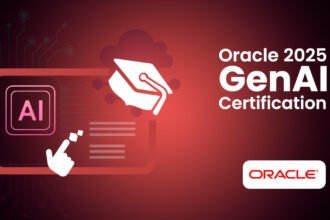Are you trying to learn coding for career development and unable to decide where to start? First, stop fearing that coding is too difficult or impossible to learn. Age is not a barrier when you truly want to learn coding. Take a start with most easy programming language to build a strong foundation in the basics.
In this article, we will guide you to pick the right programming language as a beginner. Additionally, we will also discuss the factors making coding language simpler or harder. Aiming to make your journey smoother and more enjoyable. So, you discover how learning to code can open exciting opportunities for you.
Why does learning programming matter today?
Learning to program is as important as learning the language of the digital age. According to a source, in the coming decade, 77% of the jobs will demand technical skills. The figures highlight the need for coding proficiency across industries.
Programming skills also make you more creative, develop an analytical approach, and develop problem-solving skills. Along with these skills, coding skills enable you to build websites, develop advanced AI tools, or manage data. These skills are highly valued in today’s job market. With these abilities, you can develop careers in the following fields:
- Web development.
- Mobile app development.
- Game development.
- Virtual Reality (VR) development
Why does starting from the most easy programming language matter?
Effective learning requires a strategy, so you do not end up quitting without achieving proficiency. The grasping of concepts and ideas makes the subject interesting for learners to develop logic. A confidence buildup that motivates them to learn more. Therefore, it is better to avoid complex tasks in the initial learning phase. Starting from the easiest programming language also provides the following benefits:
- Avoids confusion of complex procedures.
- Less chances of losing motivation.
- Build a strong foundation enabling learners to learn harder languages later.
- Learners can start working on small projects.
What makes a programming language easy or hard to learn?
Considering certain factors, we can determine whether a programming language is easy or hard to learn. Some of the most easy programming languages like HTML allow beginners to take a smooth start in the world of coding. However, some are hard like C, C++, and Malbolge because of their complex syntax. Let us understand the factors that beginners must consider before choosing to begin coding.
Complex syntax
The syntax of some languages is hard. Beginners would find their complex and strict rules complex. For example, Malbolge changes code while running, and LISP uses so many parentheses. Such requirements create confusion for beginners.
Manual memory control
Manual memory management is one of the main factors that make programming languages hard to learn. It requires creating and cleaning up space manually when you perform a task. Mistakes can cause damage to the computer system.
In languages like C, C++, and Assembly manage their workspace manually. Starting from these languages can lead new coding learners to frustrations.
Lack of resources
The relevant resources of some languages are not available which makes it hard to learn. Users cannot find enough learning materials like tutorials or study guides to start learning. Some programming languages like Erland and Ada only have limited resources available. Making it challenging for beginners to learn. They must start with a programming language that has plenty of online resources available for easy learning and support.
Abstract concepts
Some programming languages work very closely with machine hardware. And they use very abstract logic, making them the most difficult language to learn. For example, languages like Assembly, Haskell, and Prolog use abstract concepts and do not follow the easy step-by-step style. Beginners may find it challenging to start with these languages and understand their rules and conditions.
Developing skills in the easiest programming language and tracking growth
Take a start with easier steps while tracking your growth and learning. You can start your journey with Hypertext Markup Language (HTML), as it is beginner-friendly and has a simple syntax. The following chart will help you plan a roadmap to learn coding and track your growth in your coding journey.
| Step | Language | Learning | Tracking growth |
| Learn building website structure | HTML | Understanding tags and basic formatting | Check visual results. |
| Add style in a webpage | CSS | Use colors, change fonts and set layouts | See how your website appears. |
| Make your website more interactive | JavaScript (basics) | Setup pop up, create buttons and images, Set basic logics. | Check Realtime feedback of visitors. |
| Develop your projects | HTML+ CSS+ JavaScript | Build websites, forms and quizzes | Become able to handle task complexity. |
| Explore further programming languages | Go for Python | Learn setting loops and conditions. | Maintain record of your learnings. |
Wrapping Up
You need a firm decision and some courage to start learning coding. You must break the shell of your routine to get a new skill. Start from the basics of the most easy programming language, so you do not face any difficulty. Avoid taking a step that can hold back your progress, such as choosing the hardest programming language in the beginning.
Across the globe, there is a huge demand for beginner friendly languages. According to the Stack Overflow, HTML/CSS holds 60.4% usage among developers. It highlights that these languages are used in the most popular technologies today.
Explore more tips and career guides at Tech Detour. Also, read about the emerging technologies, expert insights and future tech trends.
















